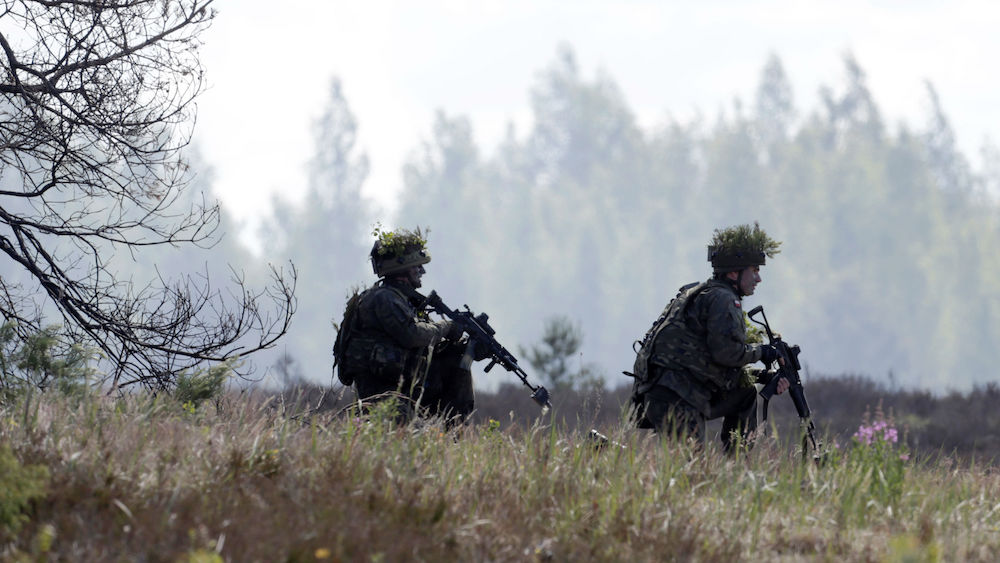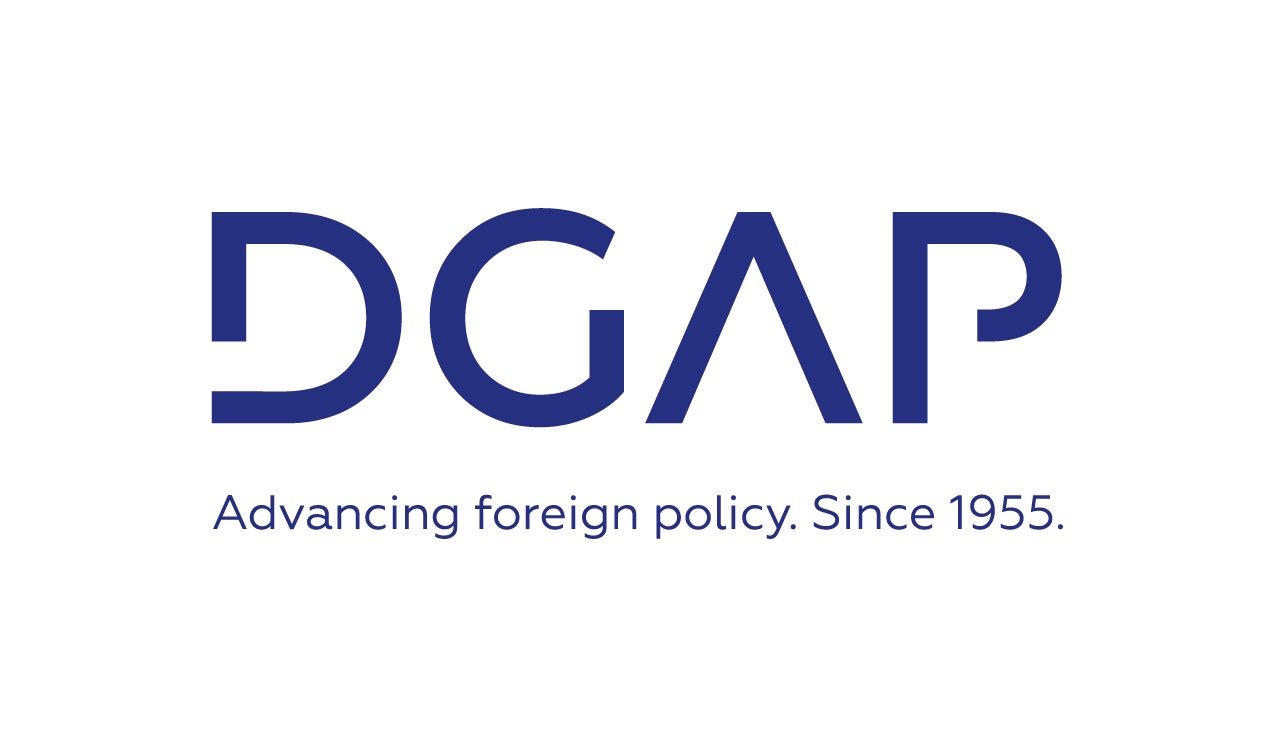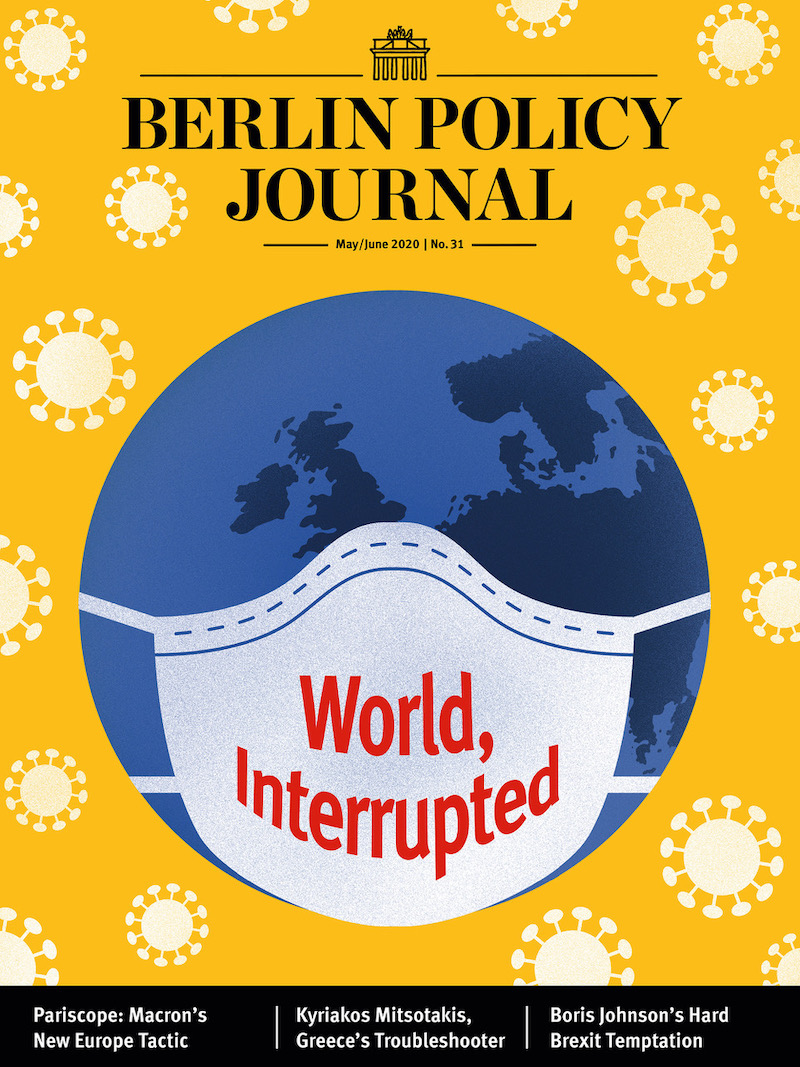Political uncertainty in Washington makes the necessity of a common European defense more urgent than ever. But national political obstacles will be difficult to overcome.
For the past sixty years, Europe has relied on Washington for its defense. But America’s bruising election campaign and the victory of Donald Trump have made one thing clear: Europe can’t count on the US to be its defender forever. The war of words with Vladimir Putin is only a sideshow in a larger and more important battle – the liberal world order is shifting its focus toward China. President Barack Obama’s pivot to Asia was a clear move to recalibrate America’s foreign policy, and more such pivots will follow, sooner or later.
In the halls of Brussels, fears of geopolitical marginalization are driving new discussions about Europe’s defense capabilities. Britain was the biggest opponent of greater integration on defense, so the Brexit vote has cast a new light on the debate. Still, talk of a European army is premature.
Establishing such an army would involve changing the union’s treaties, and – in an age of growing populism and nationalism – that’s a risk nobody is willing to take. Come what may, any changes to Europe’s defense policy must be consistent with the current set of treaties and arrangements, but that will be tricky. Even without the UK, Europe’s lack of strategic coherence is a major stumbling block.
Permanent Structured Cooperation?
One of the benefits of the Treaty of Lisbon was that it enabled permanent, structured defense cooperation.
In theory, like-minded EU member states could put permanent cooperation structures in place – and once Lisbon went into effect, we did see myriad papers, proposals, and articles on the possibilities of common security and defense, termed “Schengen defense” or “defense cores.” But these ambitions never amounted to much. Political mistrust, lack of strategic coherence, and sovereignism got in the way.
Mistrust is especially pronounced between the large member states. The Brits are suspicious of everyone. To the Germans, the French mean France whenever they say Europe. And as far as Paris is concerned, a common European defense means rallying Europe behind French interests in Africa. The EU’s most powerful states try to strike deals with their smaller neighbors instead; the German framework nations concept targets closer cooperation with its immediate neighbors, including the Netherlands and Poland, while France is working with Spain in the Sahel region.
Europe’s lack of strategic coherence is no secret. There is a clear East-West divide on what defense actually means. Western European states share three strategic priorities: fighting terrorism, containing migration, and stabilizing the Sahel and North Africa. They invest therefore in fighting asymmetric wars and supporting stabilization initiatives. In the East, however, defense is far more concerned with Russia. These member states invest in conventional skills to prepare for a high-intensity war at home or on their doorstep. These two strategies demand entirely different sets of force structures, including equipment, training, and logistics.
Then, of course, there is the Central European circle of of “free riders.” With Ukraine insulating Central Europe from Russia, the Czech Republic, Slovakia, Hungary, Austria, and Slovenia have de-facto dismantled their armed forces and cashed in on the peace dividend. They are capable neither of expeditionary warfare nor collective defense. Any permanent structured cooperation would only make sense amongst like-minded states with similar strategic vision and capabilities. Right now, it would do more to widen the gaps in European defense policy than bridge them. And as regional cooperation is already in place here and there – among the Nordic countries, for example – it remains questionable whether permanent structured cooperation is even necessary.
Sovereignism is a third obstacle to overcome. States and national parliaments want to decide when and how their soldiers go to war. And in an era of surging populism and euroskepticism, the notion of sovereignty is on the rise. It is virtually inconceivable that any parliament in Europe would surrender this right to Brussels anytime soon. In Germany, the Bundeswehr is regarded as the “Bundestag’s army.” The Central European free riders in particular see their veto right as a last-ditch option to save themselves from having contribute to defense.
This sovereignism has made effective defense planning essentially impossible. In the case of a war or international mission, it’s entirely unclear who would answer the call. Most contributions to international missions are more symbolic than effective, designed to minimize risk to personnel. France has experienced firsthand the lesson Washington learned years ago: You have to do the dirty work yourself. This essentially means all multilateral formations and troop arrangements are useless, because they will never actually be used in combat.
A Bumpy Ride Ahead
Europe’s defense industry as a whole struggles to keep up with progress on a global stage; there are 19 countries producing small arms, six producing submarines, five producing major surface combatants, and two producing combat aircraft – each independently of the other. Manufacturing is small and expensive compared to the mass-produced American and Chinese competition, and that means European countries lack the funds to drive developments in critical future weapons systems, such as space assets, missile defense, robotics, and drones.
In theory, the EU could use the European Defense Agency to assess capability needs, coordinate new R&D and acquisition programs, and facilitate common defense projects. In practice, though, the EDA is chronically understaffed and underfunded. It is more focused on the number of body armor kits than common research on future key capabilities. This is not due to the deficiencies of the EDA, but to the European capitals themselves, which are reluctant to commit to anything that would substitute their national programs.
Defense cooperation in Europe has always been a bumpy ride. Even though the continent has produced flagship projects in the past, bringing them to life was never easy. Airbus, for example, is a European enterprise, but Germany and France are constantly squabbling over the national shares of production lines, R&D, subcontracts, and quotas. Competing interests have rendered common projects like the Tiger attack helicopter, the NH-90, and the common frigate unmanageable. Frankly, it is far cheaper and quicker to buy an off-the-shelf American product than to engage in European cooperation.
National capitals are largely to blame. The big states, particularly France, try to use the defense cooperation argument as a pretext to squeeze out other competitors and keep the defense industry in their own hands. Other EU member states have adopted a predatory attitude toward offset contracts to boost their own national industries, demanding offsets that would render defense deals impossible commercially. Small states in particular have perhaps the most backward attitude of all: They want to protect and preserve their (generally uncompetitive) national champions. Some of these states abuse the national defense exemption to single-market rules to protect all sorts of domestic industries. Regarding European cooperation, they would rather safeguard their own small arms manufacturers than contribute to a European missile project.
Incremental Improvements
Much of the talk about a European army and defense integration is intended more as a jab at London than a realistic initiative. Nonetheless, European defense integration will progress – although very slowly, and away from the headlines.
The German and French ideas for increased defense cooperation are in essence an extension of the “Guttenberg” initiative launched by the former German defense minister, Karl Theodor zu Guttenberg. He wanted to increase cooperation and sharing in all non-mission-critical areas to increase efficiency: acquisition, defense education, training, logistics, and so on. States could pool and share those bureaucratic and non-combat functions without binding their national armed forces to any kind of commitment. Nothing in this proposal would overstep current EU treaties or take away competences from national parliaments.
Despite budget cuts and shrinking armed forces, even this seemingly modest approach to defense integration gained little traction. The reason is politics once again: all defense bureaucracies cherish their own defense academies, study centers, acquisition bureaus, and planning staffs. because they provide well-paid armchair jobs away from harsh duties in the field. Still, political flexibility might yet overcome bureaucratic resistance at some point and gradually open up opportunities to cooperate. There are already common logistics structures for systems used in many member states, such as the Leopard 2 tank and the Eurofighter jet. Further collaboration on training and education might follow.
In terms of structural change, the most likely scenario would involve increasing the EU’s military staff and creating a common headquarters to expand the staff’s responsibilities in planning, mission command, and control. But this would be a gradual evolution of current policies.
British defense policy might have been highly problematic for the EU, but British industrial policy was often very pragmatic. The UK participated in various common European defense projects since the 1960s and is more immune to protectionist tendencies than many of its European counterparts. Brexit complicates things further – and even if Europe’s defense problems are easier to tackle without London, 27 equally obstructive capitals remain.







